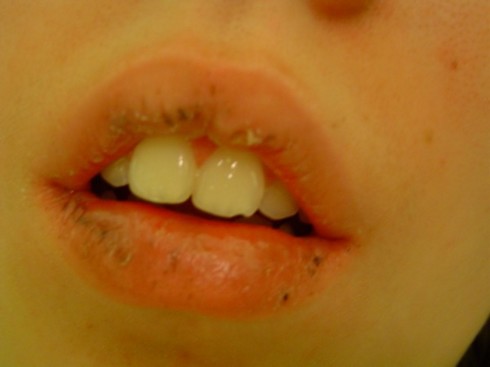(polyps-spots syndrome)
Incidence: 1/120,000 births. Dominant autosomal transmission (but 45 % of the cases are sporadic) of a mutation of STK11 gene on 19p13.3 (70% of cases). Another yet unidentified gene is responsible for other cases. The STK11 gene acts as a tumor suppressor gene. Intestinal polyposis (hamartomas) with peribuccal and perianal lentiginosis (hyperpigmented macules), as well as the melanocytic spots at the level of the fingers. Risk of cancerous degeneration of intestinal polyps. Riskof developping other, generally cancerous, tumors (ovarian, testicular, pancreatic, breast, cervical, lung). Polyps may develop outside the gut: esophagus, nose, ureter and urinary bladder.

lentiginosis
It can present as intussusception (69 %), melena, rectal prolapse.
Experimental treatment; everolimus, rapamycin.
Anesthetic implications:
frequent digestive endoscopies (follow-up and polypectomies), risk of anemia; risk of nasal polyps: caution in case of nasotracheal intubation or placement of a nasogastric tube.
References :
- Viala J, Munck A.
Polypes et polyposes.
In Gastroentérologie pédiatrique, coordonnateurs F Gottrand & D Turck, p 254-65, Doin 2016
- Sato E, Goto T, Honda H.
Peutz-Jeghers Syndrome.
JAMA Dermatology 2022 ; 158 :1316
Updated: December 2022